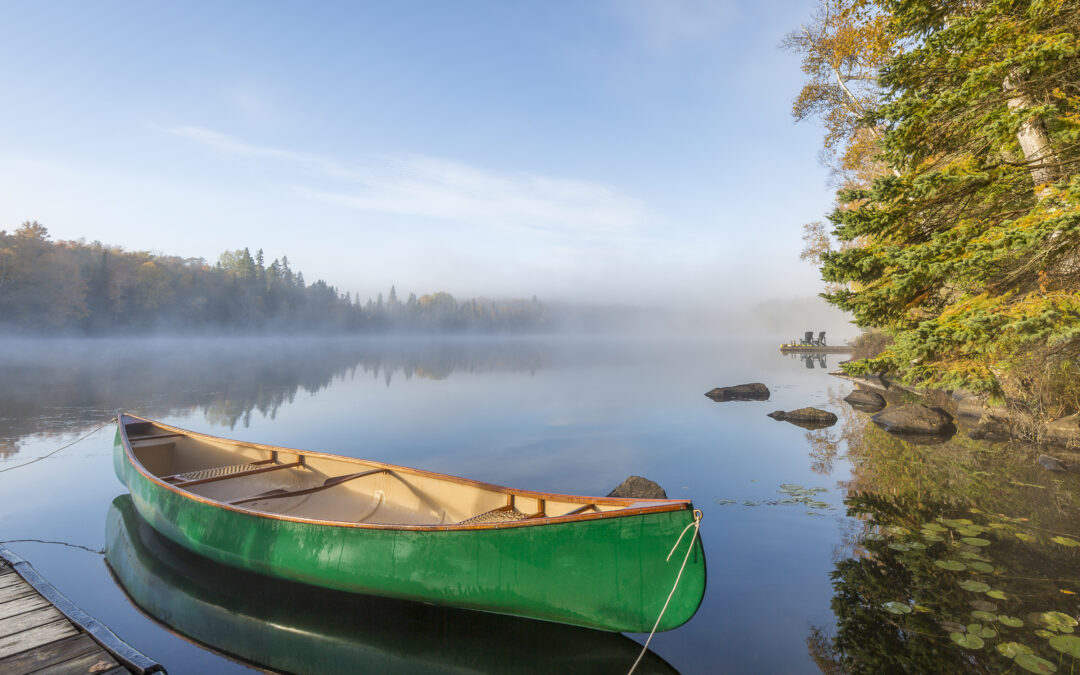For this iconic plastic product, we go just around the riverbend to analyze one of the most ancient transportation devices: the canoe.
Used for recreational, transport and sporting needs alike, this boat has been around since early civilization. Historically, where there were indigenous groups living by bodies of water, there were generally canoes, or rafts, or some variation of both. This definitely makes this now-plastic based product truly iconic and universal!
With significant cultural ties around the world, as well as spiritual meaning for many religious and cultural groups, this boat is a universal legend, with many physical and social health benefits.
Date of Invention:
There’s no exact date for the invention of the canoe, as these lovely boats have been around for thousands of years, and are prominently seen across countless cultures. Even the name ‘canoe’ is a word the British borrowed from the French, who borrowed it from the Spanish, who burrowed it from the Caribbean’s. Basically, we have no clue to who invented the canoe.
However, one of the first traces of the canoe have been traced to the the Carib Indians of the Pre-Columbian Caribbean, where they were essential for connecting the Caribbean Islands to the mainland’s of South America. Other traces of the original canoes also include the Dufuna Canoe, which was discovered in Nigeria by cattle heard men who were digging a well for water, and instead found a boat made around 8000+ years ago from African mahogany. This canoe was layered with animal fat, which acted as an ancient additive used for crack prevention. There’s also records of 8000-year-old dugout canoes in Zhejiang, China, as well as the German dugouts dating back up to 7000 years.
Finally, there’s the oldest canoe to ever be discovered: the Pesse Canoe from the Netherlands, discovered in 1955 and dated back to 8040BCE and 7510 BCE. 10 feet long, 17 inches wide, and constructed in the dugout canoe style from Scots pine log, this is the closest thing ever found to the canoe’s debut.
Holiday:
 Held on June 26th, National Canoe Day originated as a Canadian holiday, started by the Canadian Canoe Museum in 2007 to celebrate the ‘Seven Wonders of Canada’.
Held on June 26th, National Canoe Day originated as a Canadian holiday, started by the Canadian Canoe Museum in 2007 to celebrate the ‘Seven Wonders of Canada’.
Canoes are a Canadian symbol, ingrained in their culture and folklore; even their silver dollar in 1935 depicted a canoe under the backdrop of the Northern Lights.
Canoes are also culturally significant to the Maori indigenous Polynesian people, as well as other indigenous groups such as Australia’s Aboriginal freshwater communities.. This holiday is truly celebrated around the world!
A fun way to celebrate is making a waterproof, cardboard canoe, or make miniature cork canoes. Of course, you can also take your canoe out for a splash, or rent one for a cruise on the water. You can also follow along on with the holiday virtually at #nationalcanoeday!
Design:
The specific design of the canoe is determined by its intended use, and the type of waterway it will be ridden in. Generally, though, they are all thin and lightweight, allowing them to slip through the water with ease.
Polyethylene canoes are rotationally moulded (woo, that’s us!), but their manufacturing processes can vary as are many types of canoes: dugouts, outriggers, whitewater’s, and some even consider the kayak as an official canoe family member. In fact, the term canoe often also refers to the kayak, although they are structurally different vessels as the canoe generally only uses a single bladed paddle, and has an open top, while the kayak is closed.
As for its dimensions, the general rule is the longer the canoe, the faster it will go. It’s width determines its stability, with narrow canoes being faster but less balanced on the water. The canoe’s seaworthiness is determined by its depth, which increases its capacity and protects it against swamping, flooding, and sinking. Finally, its carrying capacity is measured by the weight it is capable of displacing, while still maintaining a sufficient amount of freeboard.
The shape of the canoe is broken up into multiple components. The bottom can be either flat, shallow or round, which also plays a part in configuring the balance between stability and speed. In simple terms, the rounder the bottom, the faster the canoe, but also the more unstable the ride. The things we do for a round bottom!
The flared hull sides deflect the water and keep the boat dry, while the curved sides of the boat, or the tumblehome, allows for the paddles to be used closer to the canoe’s sides, which increases paddling efficiency. This hull can either be symmetrical, offering the option of paddling solo, or asymmetrical, creating a longer bow for higher speeds, but requiring teamwork to operate.
Finally, all canoes have a “rocker”, which sadly does not refer to a skilled guitarist. Instead, the rocker is the upward curve of the bow and stern, which increases the maneuverability in turning, but makes the canoe less suitable for racing or long-distance travel purposes.
Plastic type:
Many modern canoes are made from fiberglass, but there are a large portion made from plastic.
Plastic canoes, or thermoform canoes, are created with layered plastics in polyethylene, high impact ABS, and acrylic for a tough and UV resistant external shell. While thermoforms aren’t ideal for high-impact water canoeing, they can certainly handle the gentler trips, and thus are more suited for cruising.
Canoes can also be made from royalex, a composite material comprising of vinyl and ABS external layers, and an internal layer of ABS foam. It is more rigid and structural than polyethylene, though more expensive and heavier. Folding canoes are made from PVC skin around an aluminum frame. Inflatable canoes have no frame, made from nylon with PVC air chambers.
Unique feature:
Canoes have many fun and innovative variations. Some canoes have been designed with the ability to be fully portable, like the Pakayak Bluefin which can be unassembled like Legos for easy road trips to the beach. It takes a 14-foot-long boat and compacts it into a 3.5-foot package, providing both convenience and fun!
Some kayaks have been made entirely out of a sheet of polycarbonate material which is completely transparent, and still strong and durable, allowing for a unique and magical underwater view while users paddle through the water. Meanwhile, there are evolutions of the canoe such as the Seabreacher, which are vehicles ideal for submersing underwater during water crafting activities, and using the same pointed nose design which allows the canoe for swift water travel.
Speedboat variations of the canoe which take on the aesthetics of a Corvette are also being conceptualized by designer Bo Zolland collaborating with Serious Wheels. Throughout its lifetime, the canoe has been able push through by the sheer force of its perfect combination of adaptability and simplicity in its fundamental design.
Life Cycle:
As the primary ingredient of a plastic canoe is polyethylene, many canoes today can be made from the abundance of recycled material available from plastic beverage bottles. This makes the canoe potentially pro-environment in terms of sourcing and manufacturing, if manufacturers are able to fuel the demand.
Canoes can usually last up to 10-15 years before it will need to be replaced or repaired. While polyethylene is resistant to saltwater and UV light, it will eventually succumb to these elements, particularly if it is made from Royalex.
The issue with products such as canoes, which use large, bulky and durable plastics, is that they are also consequently difficult to break apart and recycle once they’ve reached their end of user life, both through mechanical means and via biodegrading. This means the options are limited to selling or donation. Otherwise, there is the dump, which is not ideal as it adds to the already overflowing landfills.
Please do not sink your unwanted canoes into the ocean, as this can cause the chemicals in the plastic is leach into the water over time as it degrades, polluting the water and surrounding wildlife!
Future Improvements:
Many future improvements surround the sustainability and environmental aspects of the canoe, particularly focusing on using materials which are recycled or recyclable. One designer, Rob Thompson, made a canoe from recycled sea plastic, which he then used to paddle out to collect even more sea plastic. Turning this plastic into manufacturable material took two years of research and development, but happily now many others are following his lead.
The future of canoeing sees possible changes in design to make them lighter, shorter and more versatile. The addition of foot peddles is also a new trend, specifically for kayaks. There is a call in the canoeing communities for specialized learning programs which accommodate for the more adventurous families and boat lovers alike. Canoeing is becoming less about the materialism of owning a canoe, and more about the experience of the ride, which places rental and tourist services at the forefront of the water-sporting scene.
Other features in high-demand are heated paddle shafts and heated seating, which are self-generated from the canoe’s movement, which helps counter against the often chilly ocean spray! We are aiming for the luxury features of water travel, only possible because of the adaptable nature of its brilliant basic design.
Whether you’re looking to get closer to nature, to meet new people, or train your strength and paddling skills, the canoe is a classic boating experience which can be done solo, or with the entire family. The versatility of this boat is what made it a global sensation throughout history, appealing to thrill seekers and gentle water lovers alike. Nothing broadens the horizon like a canoe!

References:
https://www.nonstopcelebrations.com/days/in-june/celebrate-national-canoe-day-every-june-26/
https://sciencemadefun.net/blog/national-canoe-day/
https://paddlecamp.com/what-are-canoes-made-of/
https://www.frontenacoutfitters.com/blogs/tutorials/canoe-materials-manufacturing-processes/
https://www.canoeicf.com/history
https://www.outdoorrevival.com/old-ways/not-finished-history-canoe.html
https://www.saturdayeveningpost.com/2017/07/brief-history-canoe/
https://adventure.howstuffworks.com/outdoor-activities/water-sports/canoeing.htm
https://northernwilds.com/worlds-oldest-canoes-where-are-they/
http://www.iro.umontreal.ca/~vaucher/History/Prehistoric_Craft/
https://www.muchbetteradventures.com/magazine/canoe-vs-kayak-whats-the-difference/
https://paddlingmag.com/boats/canoes/boats-elements-of-canoe-design/
https://www.sea.museum/2016/12/15/australias-first-watercraft/canoes
https://coolofthewild.com/canoe-vs-kayak/
https://www.leisurepro.com/blog/scuba-guides/the-difference-between-a-kayak-and-a-canoe/
https://www.myccr.com/phpbbforum/viewtopic.php?f=49&t=41986
https://pontoonopedia.com/how-to-get-rid-of-a-fiberglass-boat/
https://earth911.com/eco-tech/recycle-boats/
https://boatingindustry.com/top-stories/2017/01/12/aging-recycling-hulls-a-looming-crisis/
http://www.madehow.com/Volume-2/Kayak.html
https://paddlingmag.com/stories/industry-trends/paddling-experts-on-the-future-of-kayaking/



